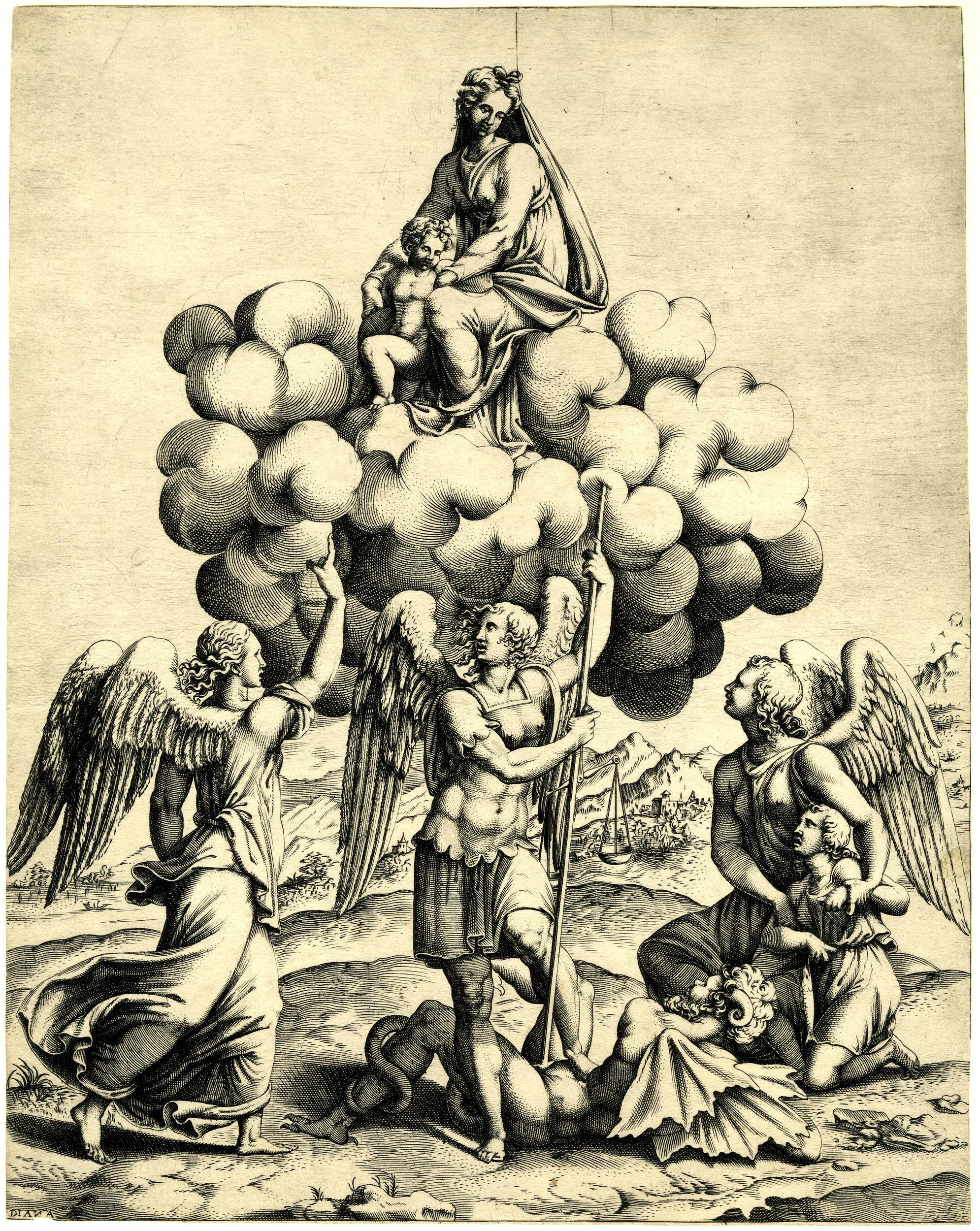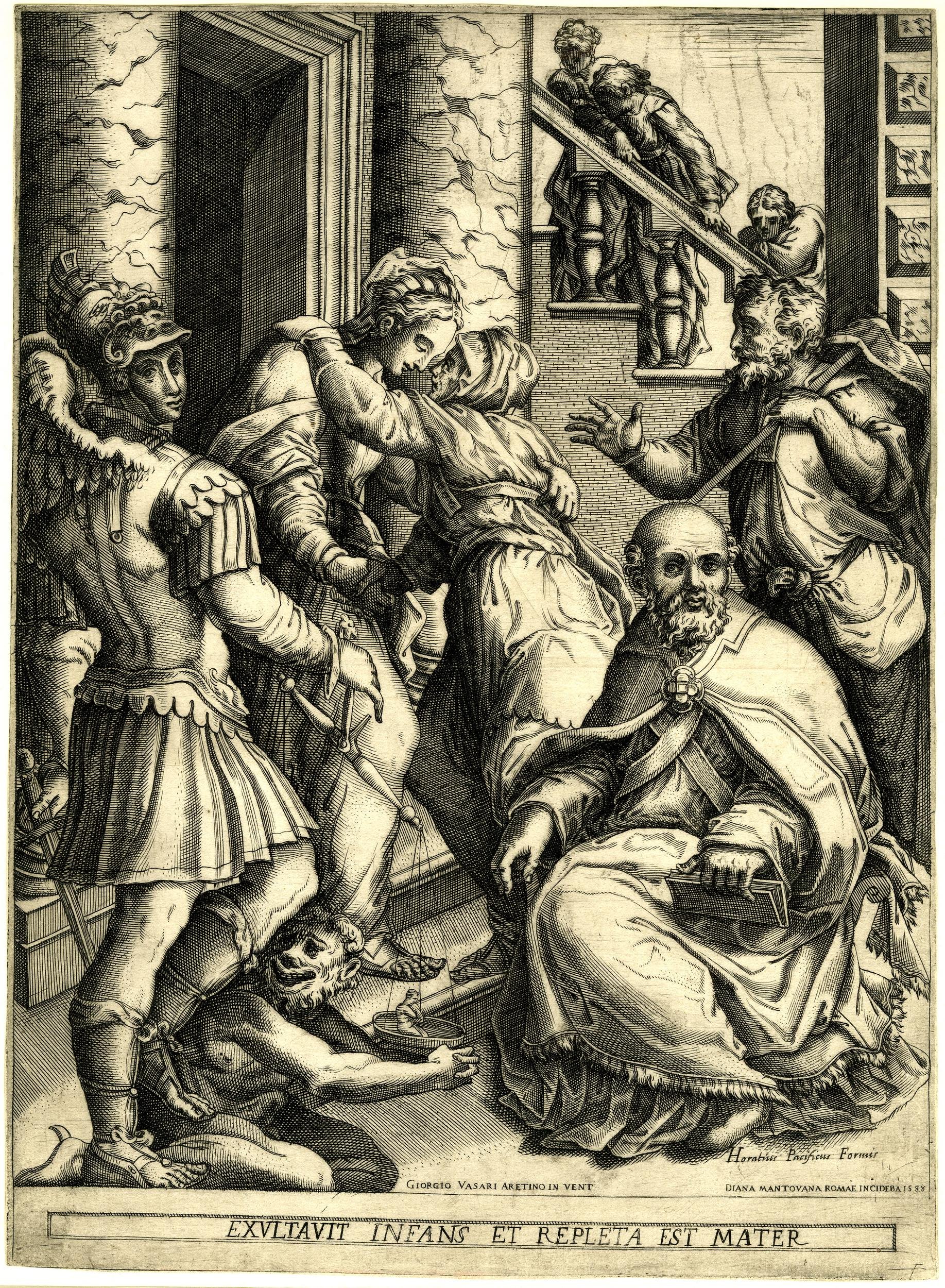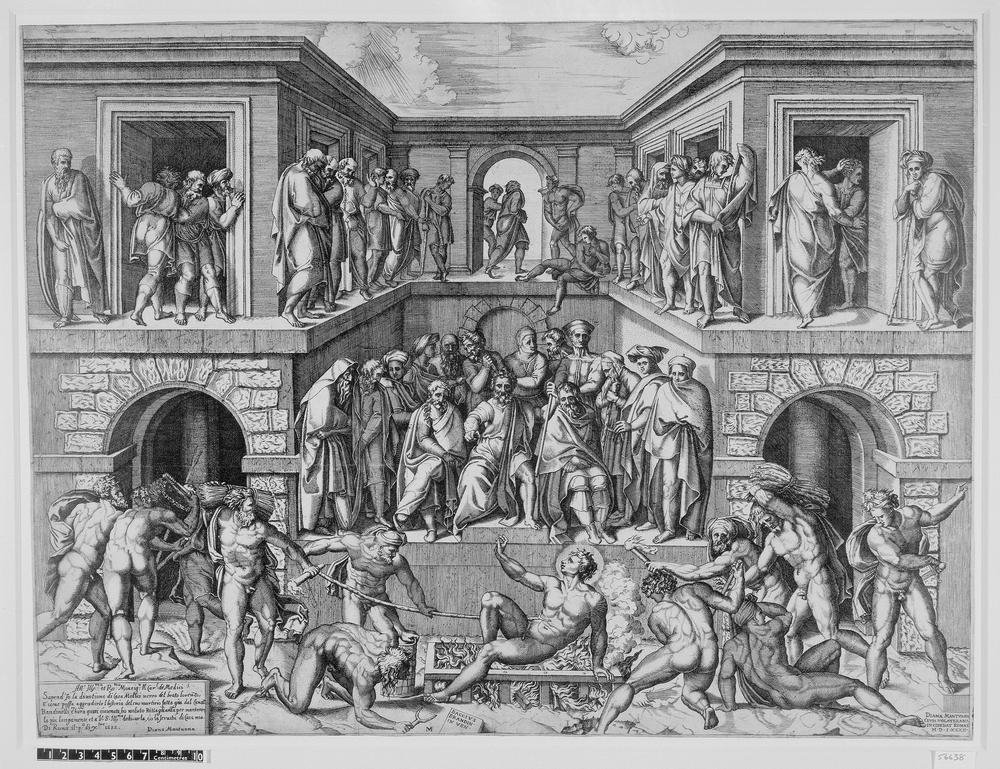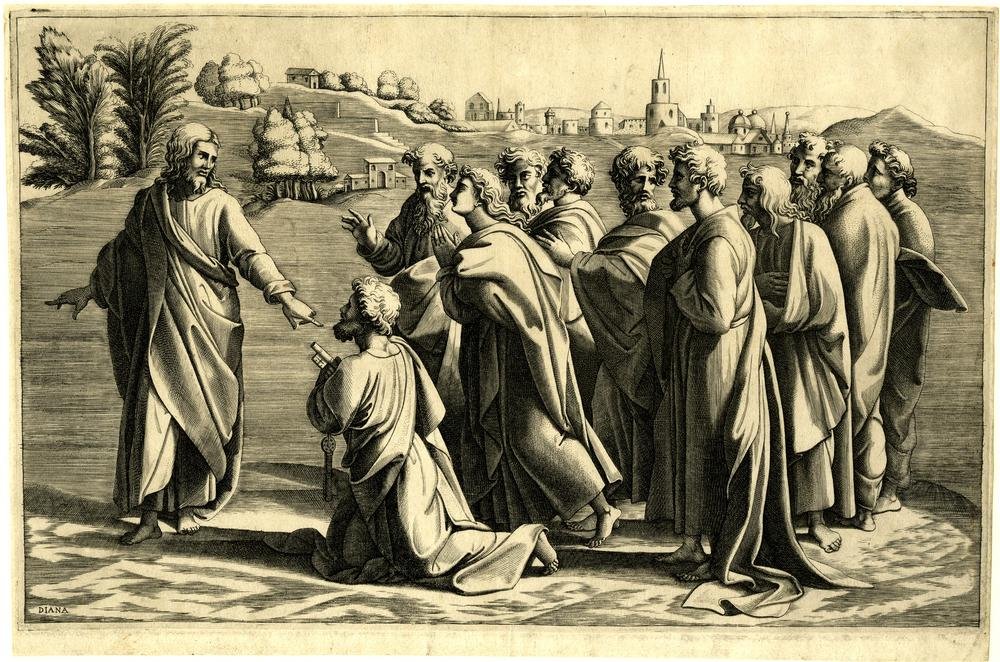Episode #102: Bits of "Breaking Barriers": Diana Scultori (Season 12, Episode 3)
For this season of ArtCurious, I’m doing something a little bit different. I’m treating you to renditions of eight of my favorite segments from Breaking Barriers: Women Artists of Renaissance Europe, my online course found exclusively at avid.fm. Every other week through January, I’ll share selections from Breaking Barriers, and encourage you that if you like it, you can purchase the whole course. Today: One of the earliest-known female printmakers in Europe, Diana Scultori (sometimes identified as Diana Ghisi or Diana Mantuana), Diana was a grand marketer of her own work, even requesting a particular “Papal Privilege” to sell and promote her engravings while living in Rome. Rock on, Diana! From Breaking Barriers: Women of Renaissance Europe, please enjoy “Diana Scultori (Diani Ghisi): With Papal Privilege.”
Please SUBSCRIBE and REVIEW our show on Apple Podcasts and FOLLOW on Spotify
SPONSORS:
Indeed: Listeners get a free $75 credit to upgrade your job post
Canvasprints.com: Get 25% off of your entire order of canvas prints, canvas wall displays, metal prints, photo tiles, photo blankets and pillows, and much more when you use code ARTCURIOUS25
Water and Nature Sounds Meditation for Women: listen to a relaxing podcast and learn more about meditation here
Masterclass: Get unlimited access to EVERY class, and as an ArtCurious listener, you get 15% off an annual membership
Want to advertise/sponsor our show?
We have partnered with AdvertiseCast to handle our advertising/sponsorship requests. They’re great to work with and will help you advertise on our show. Please email sales@advertisecast.com or click the link below to get started.
https://www.advertisecast.com/ArtCuriousPodcast
Episode Credits:
Production and Editing by Kaboonki. Theme music by Alex Davis. Logo by Dave Rainey. Additional music by Storyblocks.
ArtCurious is sponsored by Anchorlight, an interdisciplinary creative space, founded with the intent of fostering artists, designers, and craftspeople at varying stages of their development. Home to artist studios, residency opportunities, and exhibition space Anchorlight encourages mentorship and the cross-pollination of skills among creatives in the Triangle.
Recommended Reading
Please note that ArtCurious is a participant in the Bookshop.org Affiliate Program, an affiliate advertising program designed to provide a means for sites to earn advertising fees by advertising and linking to bookshop.org. This is all done at no cost to you, and serves as a means to help our show and independent bookstores. Click on the list below and thank you for your purchases!
Episode Transcript
Hi there, my lovely listeners! Welcome back to the ArtCurious podcast, where we explore the unexpected, slightly odd, and strangely wonderful in art history. If you’ve listened to our last episode, you’ll know that this season of the podcast is different. Instead of our usual spate of new episodes, I’m taking a little time off to research a new book--yay!-- so I’m sharing some slightly zhug-ed renditions of eight of my favorite segments from my audio course, Breaking Barriers: Women Artists of Renaissance Europe. Breaking Barriers is a 21-day course, meaning that you get essentially a mini-episode of ArtCurious every day for three weeks straight, and the unique opportunity to learn about some artists that you may have never heard of before--and they are likely to blow your mind, or become your next favorite artist. That’s three weeks, with every day featuring the story of a new Renaissance painter, sculptor, miniature maker-- from Sofonisba Anguissola and Marietta Robusti to lesser-known artists like Plautilla Nelli and Levina Teerlinc, this course will lead you through the lives and careers of groundbreaking women who’ve made their marks on art history. This evergreen course is all about learning for fun, no tests, no papers, no quizzes, just cool content that you can access on your own time so you can learn at your own pace. Register for the course and start learning today at Avid.fm/jennifer. In the meantime, here’s one of my favorite snippets from Breaking Barriers, all about the life and work of Diana Scultori, the engraver extraordinaire. Enjoy!
Diana Scultori is one of those artists who is known by several names: Diana Scultori, which is her proper last name, as the daughter of the artist Giovanni Battista Scultori, who was a polymath working in painting, sculpture, and printmaking for the court of the Italian city of Mantua. And being, as she was, from Mantua, it’s also typical to see Diana called Diana Mantuana, which is like saying Leonardo da Vinci-- because, as I’ve noted ever since the very first episode of our podcast, essentially means Leonardo of Vinci (which is why we refer to him as “Leonardo” for short, and not “Da Vinci”-- all of this to say that Diana Scultori, when called Diana Mantuana, really just means Diana, the Mantuan lady, in short-- the gist here is that she was so famous both within her hometown and outside of it that there wouldn’t have been a need to refer to Diana by her last name--that she was the Diana of Mantua, that even if there were many other Dianas in the city, that it was she, the engraver, of whom someone would be speaking when talking about a Diana from Mantua. Pretty cool.
But Diana Scultori isn’t always called by her proper name, nor as Diana Mantuana. Throughout history, she’s also sometimes been known by the moniker of Diana Ghisi, as if this isn’t confusing enough. Diana Ghisi, though, seems to be a misnomer. Some researchers suggest that the appellation was an error that began with an early art historian named Johann Adam Bernhard Ritter von Bartsch-- we’ll just call him Bartsch here for short-- who, in the 18th century, completed one of the first studies of the history of engravings, documenting many of the known printmakers, and their superb prints, that existed in Europe at that time. In his work, Bartsch referred to Diana and her father by the last name of Ghisi, and this documentation stuck. So, yeah--all of this is a bit confusing, to say the least. You’ll see Diana listed, then, under all three names-- Diana Scultori, Diana Mantuana, and Diana Ghisi. And to make it even more interesting, Diana would sign her own prints just like that--as Diana, a single-name, like Cher or Beyoncé. So, wheeee! Lots of fun in the world of art attribution here! Can you hear the sarcasm in my voice?
As we’ve come to expect from the majority of women artists in the Renaissance, Diana Scultori got her start at her father’s side, along with her brother, Adamo Scultori, who studied alongside her in their father’s studio. Diana Scultori was born in Mantua, but there’s some speculation about her birth year. Most commonly it’s noted as around 1547, but more recent scholars have pointed to works from the late 1530s signed by Diana, meaning that she was quite possibly born in the 1520s. Regardless of the her year of birth, we do know that though her father taught her most of the details of his trade, it’s been said that Diana also did a lot of self-education, copying from drawings and engravings by other artists in order to learn how to make her own works of art. By no means is this unusual-- studying and emulating the works of artists who came before is still a cornerstone for learning artistic techniques today. But what’s cool about Diana Scultori is that this practice-- the reproduction, in print form, of the works of other artists-- is actually what Scultori would end up doing as her life’s work-- the reason why we know her today. Before we get to that, though, let’s do a little primer on printmaking, and especially its place in the world of Renaissance art.
Printmaking, in its earliest iterations, is all about the replication or reproduction of a pre-existing work of art, though this isn’t always the case. And it doesn’t mean it’s a purely mechanical reproduction, like a photocopy of an original work. This can get a bit confusing, and as a curator, I’ve often got this question in the past: what makes a print different from a copy-- and can a copy be a print, and vice versa? I know, even my head is a little explosion-prone at this point, so let’s use an example as a way to mull through exactly what a print is, in this case. Say that Raphael paints a picture. Raphael was trained as a painter, so to get his work disseminated to a wider audience--which would have benefits for marketing one’s work, getting more commissions and renown, and so forth--Raphael might need a printmaker to produce a print of his work, which would allow it to be sent far and wide as a kind of promotion, as well as a potential collector’s item or work of art with its own value. The printmaker, then, would basically make a small drawing of the original work of art--in reverse, by the way--onto a metal or stone slab, which would then be covered with ink and printed onto a surface, like paper or fabric. When printed, the image would be reversed to match the layout and design of the original, hence the reason why the printmaker needs to design the work in reverse. All of this is a gross generalization, but what I don’t want you to miss here is the extreme talent that one would need to be a printmaker. You’d need to be able to skillfully replicate the design of another artist, work on a much smaller scale with mathematical accuracy, and--in order to correctly produce the print when it is stamped-- you’d have to create your work as a mirror image of the original. To get it right is quite the feat. And remember that the print, too, is then its own original work of art in and of itself, one that can stand on its own even if it exists as one of a collection of multiples.
There are many, maaaany different techniques for printmaking out there, but for the most part, Diana Scultori created engravings, which, depending on the exact type of engraving here, is usually carving into a metal or wooden--or even stone --surface with a little tool called a burin, which acts as a pen or stylus in this case. Since her father was himself an engraver, she learned directly from him, who himself had learned at the studio of the Roman artist Giulio Romano, who spent the second half of his life in Diana’s hometown of Mantua. My earlier reference to Rapahel in my example about printmakers was actually purposeful, because Giuliano Romano was himself a pupil of Raphael. So Diana Scultori was only three degrees separated from Raphael, but it really seems like Romano had the greatest effect on the development of her artistic skills, though Diana never met him in person, as Romano died the year before she was born. It was Romano’s work that Diana Scultori, like her father before her, had most frequently emulated and produced in engravings. Many of her most famous works are reproductions of pieces by Romano or his teacher, Raphael, like her take on Romano’s image of the Virgin and Child with Archangels, an undated piece showcasing Mary and Jesus seated in these insanely bulbous clouds and being adored by the archangels below. Truly, I adore those wonderful clouds of hers.
When we come back, Diana Scultori is included in one of the most important round-ups of Renaissance art.We’ll get to that in just a moment. Thanks for supporting our show by listening to our advertisers today.
Welcome back to ArtCurious.
Scultori not only created prints based on the works of Giuliano Romano and Raphael, but she also made at least one engraving of the work of an additional Renaissance painter-- none other than Giorgio Vasari himself. (Drink if you’re following along with our Vasari drinking game at home.). Vasari, as I’ve noted ad nauseum, was one of the first grandpas of art history as we know it, a painter who was himself one of the first artistic biographers and who is mostly remembered today for his somewhat flawed masterwork, his Lives of the Most Excellent Painters, Sculptors, and Architects, where he profiled the lives and careers of everyone from Giotto and Leonardo to Michelangelo and, yes, Sofonisba Anguissola, who was one of four women Vasari included in his first edition. But I think that Vasari was keenly appreciative of flattery, and was pleased that Diana Scultori created prints based from his work, because he went ahead and included Scultori in his second edition of the Lives, his revised version, where he wrote of her, quote, “she engraves so well that it is a thing to marvel at; and I who saw her, a very gentle and gracious girl, and her works, which are most beautiful, was struck with amazement." Unquote. So even though Vasari was most likely influenced by his assumed appreciation by Diana, I don’t think that it was solely flattery that was the cause for her inclusion. I don’t think Diana was courting Vasari-- I think her work was worthy of inclusion in the first place, and that her take on Vasari’s works was probably the latter artist’s introduction to her work. From there, he was probably “struck with amazement,” as he writes, and the rest is (art) history.
Several art historians have noted that Diana Scultori’s choice to reproduce the works of other artists wasn’t just a savvy marketing choice, but one that actively hid her own inadequacies. According to Emily Peters, a curator at the Rhode Island School of Design, even though Diana would have gotten a good education at the hands of her artist father, he probably wouldn’t have trained her much in the way of life modeling, perspective, or the manners in which one could design their own work of art from scratch. Her brother probably would have been trained, but Diana? Probably not. Her education would really have been focused on the mechanics of engraving technique. But again, this isn’t necessarily a bad thing. In using a work from RISD’s collection as an example, Peters writes, quote, “Diana’s engravings follow carefully their source designs and reflect, to some extent, her lack of training in drawing. If the implementation of the scene is a bit stiff—keeping in mind that Diana had probably never sketched from a real human body—she negotiated the changes to the format with a great deal of skill, creating a balanced composition that is full of variety with a range of figural positions and gestures.” Unquote. Diana, then, made the most of what she got and what she was given, and also put herself in a unique position of not having to fight for original commissions, opting instead to make a great living by printing the works of others.
In 1575, when in her mid-twenties (which was considered quite late for renaissance times), Diana Scultori married an architect named Francesco da Volterra, and the couple moved from Mantua to Rome, which by then was the most hopping spot for Renaissance architecture. Rome, in the 1570s, was only a couple of decades removed from Michelangelo’s commission to redesign St. Peter’s Basilica, and that basilica’s dome-- though still incomplete at that time-- was the talk of all Italian architects. Michelangelo’s dome, by the way, would go on to become the tallest dome in the world, a record it still holds today. So while Diana Scultori’s husband aspired to work and create his own ambitious designs in the Eternal City, Diana determined that her work would best serve to further his career, a way to interpret his designs as engravings to help with distribution and, again, marketing for future commissions. But Diana not only engraved her husband’s designs. She also worked to promote the works of a cadre of Roman artists, many of whom were associated with her husband and who worked to create paintings, murals, tapestries, and more for the buildings he designed. This is all well and good, but sometimes it’s shocking to remember that Diana Scultori was doing all of this at a time when women weren’t often allowed, let alone were thought able, to do much outside of the home. So to be able to establish her art career in Rome and to make a name for herself as a sought-after engraver, she applied for something rather rare: a designation called “Papal Privilege,” which she received, according to surviving documentation, in June of 1575. Receiving papal privilege, under the aegis of Pope Gregory the 13th, essentially gave her special permission, as a woman, to set up shop as a printmaker, which provided her with a kind of license or document which not only allowed her to sell her works personally, but also protected her from the Renaissance equivalent of copyright infringement, which would favor Diana if there was ever the discovery of any unlicensed reproduction of Diana’s works. I call this excellent business sense, and indeed, it seems that Diana was lauded far and wide for her savviness. This savviness also extended back to her hometown, which, again, she referred to by calling herself, on occasion, Diana Mantuana. Even while living and working alongside her husband in Rome, she produced and dedicated to the rulers of Mantua, particularly the duchess of Mantua, Eleanora. In this way, she smartly sought and received-- commissions from both cities.
Not much is known about Diana Scultori in the latter part of her life. She seems to have made her last print--or at least her last surviving print-- in 1588, which was a scene of the entombment of Christ made after a relatively minor Roman painter. And we don’t know why she stopped working. It could have been for any variety of reasons. Some sources note that she gave birth to a son, Giovanni Battista, in 1578, though I haven’t been able to fully confirm this. And motherhood did often stop women’s careers from proceeding much further, so it’s a possibility, though the 1588 date of her last-known engraving does speak to her having continued for at least a decade, if all is accurate. We do know that her husband, Francesco da Volterra, died in or around 1594. Two years later, Diana married again, to another architect, this one twenty years her junior, which is kinda cool. But after that, the specifics of her life just kinda disappear. After her death in Rome in April of 1612, though, her engraving plates continued to be used and so her images continued to be made--and spread throughout europe--even after her death. That’s the great thing about printmaking. It allowed Diana Scultori to not only forge a good career for herself, but also an incredible afterlife.
I so appreciate you taking the time to listen to ArtCurious today-- thank you so much, and I hope you enjoyed learning about Diana Scultori as much as I did. As I mentioned at the top of the show, it would mean a whole lot to me if you would register for my course, Breaking Barriers: Women Artists of Renaissance Europe. It’s on sale right now, 21 days, learn on your own time and at your own pace, and it’s fun--I promise. No quizzes or grades, either, just learning for the sake of good old fashioned learning! Please register now at avid.fm/jennifer, and not only will you get the entire 21 day course, but you’ll also receive a PDF with every episode featuring the images discussed and a recommended reading list. So again, that’s Breaking Barriers: Women Artists of Renaissance Europe, available now at avid.fm/jennifer.
I’ll be back with you again in two weeks to share another story from Breaking Barriers. Thank you, again, for supporting me while I research my next project--you are awesome. Remember that we’ve got exclusive video content coming at you over on YouTube. So check us out there-the link is in the show notes on your handy-dandy podcast app right now. Stick with me, and stay curious!










